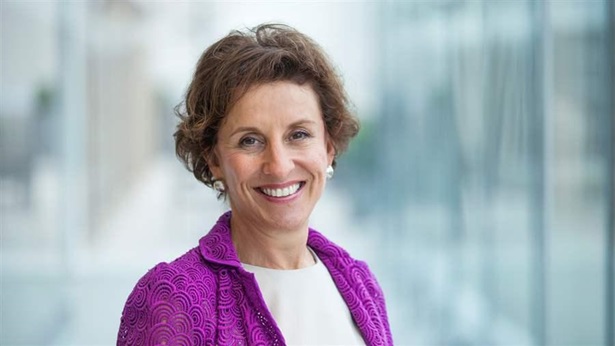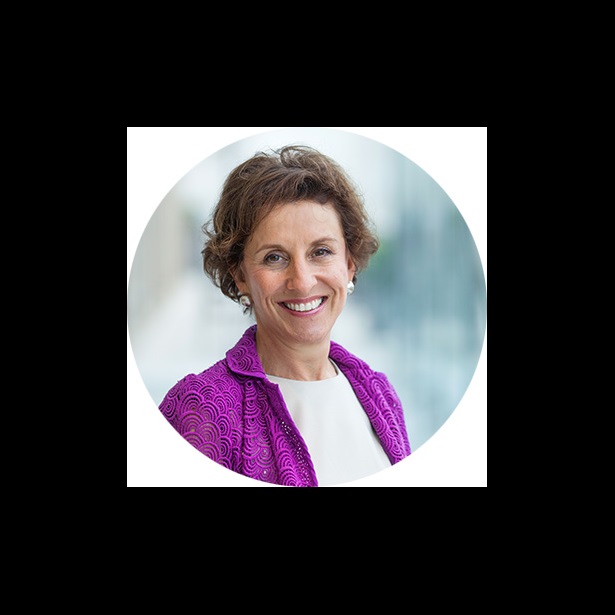Partnering With Pew: Sally O’Brien
Sally O’Brien explains how Pew welcomes partners to work in tandem on important challenges and achieve measurable results on common goals.
Senior vice-president Sally O’Brien oversees Pew’s philanthropic partnerships. She sat down with Trust to talk about the latest ways Pew’s collaborations with donors are achieving long-lasting, transformative change.
Why does Pew work with philanthropic partners?
Although Pew began as a traditional foundation more than six decades ago, it has evolved into an international, nonpartisan public policy organization. We operate programs like any other NGO and philanthropic partnerships are now essential to our efforts to create lasting solutions to great challenges. Whether it’s helping states develop more efficient corrections programs or conserving the Arctic where melting ice is dramatically altering the ecosystem, we can achieve greater success when joining with others to share knowledge and leverage resources. In fact, partnerships now support about 20 percent of Pew’s programmatic efforts.
Who are some of Pew’s current donors?
Our funders represent a range of foundations and individuals from around the world who share our commitment to finding solutions to complex problems and making a lasting difference in the world. For example, Pew’s Global Ocean Legacy project has developed collaborative relationships with several philanthropic partners interested in creating the world’s first generation of marine parks. One of these, the Geneva-based Bertarelli Foundation which has a strong emphasis on marine conservation, joined with Pew to pursue the creation of a 270,000 square mile (about 700,000 square kilometers) fully protected marine reserve in the exclusive economic zone of Easter Island, a special territory of Chile.
The majority of our donors work in partnership with us to accomplish shared goals, but occasionally we receive unexpected gifts. For example, we recently learned that we were the beneficiary of a gift from the estate of a sociology professor from Kansas who had never contacted us in the past and whom we didn’t know. And while we are fortunate to count a number of signatories of the Giving Pledge among our donors, we also receive support from those who are just beginning their philanthropic journey. Not long ago a group of Girl Scouts in Oregon and Washington raised $109 for Pew’s global sharks conservation campaign
Why are philanthropists interested in Pew?
My sense is that they are attracted to Pew’s mission and the values defined by our founders. Those principles continue to drive our work—seeking the highest return on philanthropic investments, providing benchmarks to show progress toward measurable goals, and evaluating the impact of funding decisions. In addition, I think our partners recognize and value Pew’s expertise in independent research and advocacy and our ability to broaden the scope of what their philanthropy can achieve.
How does Pew decide what to work on with partners?
Our research guides our agenda. We delve deeply into subjects, draft proposals for improving policy based on pragmatic goals, and work with decision-makers to reach lasting solutions. The underlying philosophy is, how can we create the greatest impact to bring the greatest good. Then we seek allies, or our efforts are noticed by others with a shared interest. Here’s an example: Pew developed some of the first and most authoritative research into underfunded public pensions throughout the United States. These present tough fiscal problems for state policymakers and threaten the retirement security of public workers.
Our research and policy proposals attracted the attention of the Laura and John Arnold Foundation, which also had been working in the field. The foundation saw an opportunity to leverage its resources and formed a partnership with Pew to provide technical assistance to policymakers to help them address this important issue. And those efforts have produced real results. Last year, for example, Kentucky passed bipartisan legislation that is projected to improve the fiscal sustainability of its public pension system by billions of dollars while protecting the retirement security of current and future workers.
How do partnerships work?
We tailor each relationship to suit the donor’s needs. We have built funder consortiums around shared goals, like the Voting Information Project, which provided essential polling place locations and candidate information through the Internet and mobile devices to more than 25 million of the 90 million people who voted in 2012. That project has been supported by Pew and a group of funders, including the Rita Allen Foundation, the Democracy Fund, the Ford Foundation, the William and Flora Hewlett Foundation, the John D. and Catherine T. MacArthur Foundation, the State Infrastructure Fund at NEO Philanthropy, and the Open Society Foundations, as well as major technology companies, including Google, Microsoft, and Facebook.
For other partners we have helped create donor-advised funds. And in other instances we have built coalitions between organizations and individuals. Pew’s campaign to preserve a billion acres of the Canadian boreal forest is a partnership with the Hewlett Foundation, the Gordon and Betty Moore Foundation, the Prince Albert II of Monaco Foundation, Robert and Michelle Friend, and Ducks Unlimited, Inc.
There are many options for how to organize a partnership, but in every instance donors gain the advantage of Pew’s policy and strategic expertise, as well as our experience in program planning and evaluation, and the support of our finance and legal departments. That’s particularly attractive for those who don’t want to create their own philanthropic infrastructure.
And, of course, Pew benefits not only from our partners’ philanthropy, but from the knowledge and experience that they bring to the table.
How do prospective partners learn more?
Pew frequently shares information about our work and the opportunity to partner with us at conferences for thought leaders and philanthropists. Recently we’ve spoken at the Economist World Ocean Summit; gatherings of The Philanthropy Workshop in New York, San Francisco, and Washington DC; and at the Aspen Ideas Festival. The National Center on Family Philanthropy held its trustee training meeting this year at Pew’s Washington Conference Center. While you can look for us at meetings like those and find information at our website, pewtrusts.org, you can call or email me directly at any time. My phone number is 202-540-6525, and my email is [email protected].










